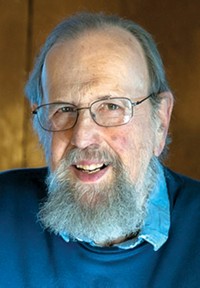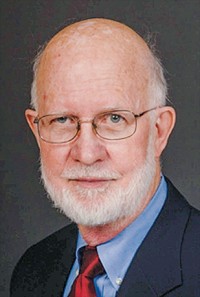Advertisement
Grab your lab coat. Let's get started
Welcome!
Welcome!
Create an account below to get 6 C&EN articles per month, receive newsletters and more - all free.
It seems this is your first time logging in online. Please enter the following information to continue.
As an ACS member you automatically get access to this site. All we need is few more details to create your reading experience.
Not you? Sign in with a different account.
Not you? Sign in with a different account.
ERROR 1
ERROR 1
ERROR 2
ERROR 2
ERROR 2
ERROR 2
ERROR 2
Password and Confirm password must match.
If you have an ACS member number, please enter it here so we can link this account to your membership. (optional)
ERROR 2
ACS values your privacy. By submitting your information, you are gaining access to C&EN and subscribing to our weekly newsletter. We use the information you provide to make your reading experience better, and we will never sell your data to third party members.
Materials
Martin L. Sage
by Susan J. Ainsworth
November 12, 2012
| A version of this story appeared in
Volume 90, Issue 46
Martin L. Sage, 76, a professor of physical chemistry emeritus at Syracuse University, died on Feb. 3.
Sage earned a B.S. in chemistry at Cornell University in 1955 before earning an M.A. in chemistry in 1958 and a Ph.D. in chemical physics in 1959 at Harvard University under the guidance of E. Bright Wilson.
He was a postdoctoral fellow at Brandeis University and a faculty member at the University of Oregon before joining the Syracuse faculty in 1967.
At Syracuse, Sage concentrated on the theoretical aspects of vibrational spectroscopy. He calculated absorption and emission frequencies and intensities of highly excited vibrations and developed computer techniques for dealing with large-amplitude and coupled vibrations. He investigated interactions between nonbonded hydrogen atoms, various potential forms for X–H bonds, and the effect of vibrations on X–H stretching potentials.
Sage, who retired in 2006, took sabbaticals at Tel Aviv University and Oxford University. He was a member of the American Physical Society, the American Association for the Advancement of Science, and ACS, which he joined in 1985.
Sage was active in many local groups including those focused on the environment, conservation, civic issues, and chamber music.
He is survived by his wife, Gloria; son, Daniel; and brother, Samuel.
Obituary notices of no more than 300 words may be sent to Susan J. Ainsworth at s_ainsworth@acs.org and should include an educational and professional history.





Join the conversation
Contact the reporter
Submit a Letter to the Editor for publication
Engage with us on Twitter